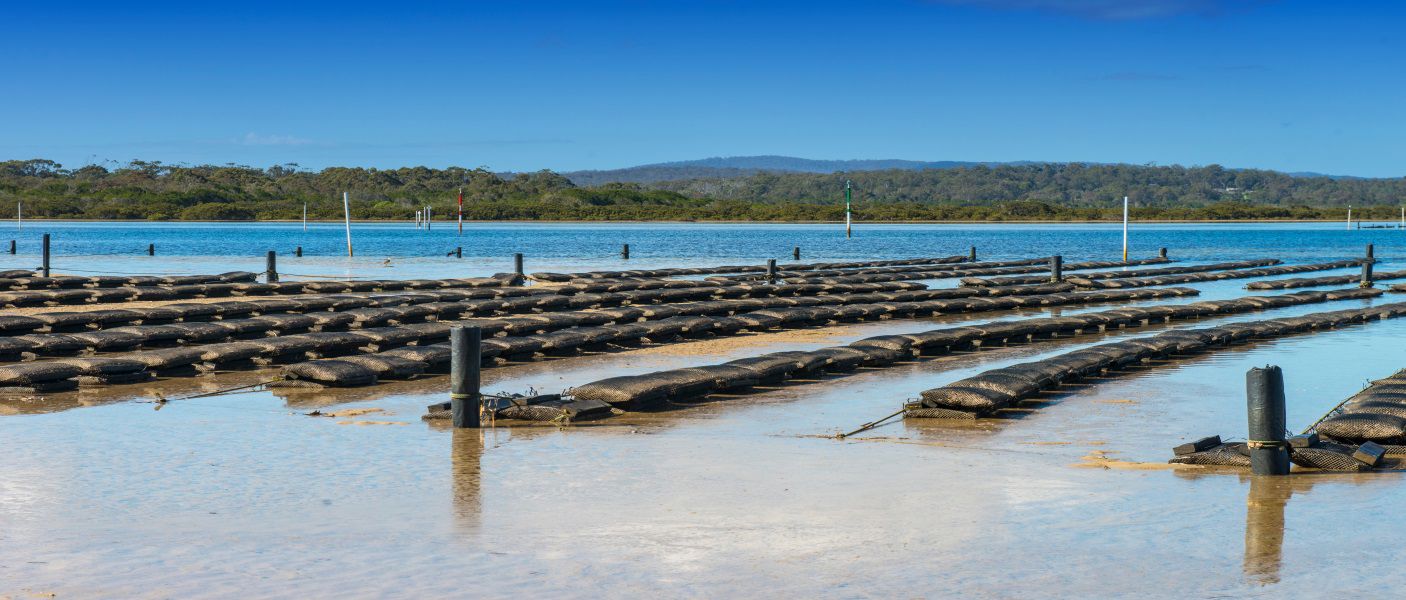
Waterfront Property Owners: Riparian Rights vs. Oyster Aquaculture Companies
Riparian property rights are the reason that people pay extra to live “on the water”. A previous article from June 2013 explains why riparian property rights command such great value. The homes on Sandfiddler Road in Sandbridge, Virginia, give a practical example that further proves the premium value that the market attaches to riparian property rights. Up and down the five miles of Sandfiddler Road, the homes on the east side – the side facing the water – are priced 40% higher than comparable homes on the landlocked west side of the road. “Off the bottom” oyster aquaculture, if not carefully controlled, interferes with riparian property rights and reduces the value of waterfront property.
There is at least one economic study that shows, and Virginia oyster companies increasingly appear to believe, that the oyster companies can fatten their bottom line if they switch from “on the bottom” oyster aquaculture to the new “off the bottom” oyster growing equipment. The Pangea Shellfish Company provides an excellent description of these various methods of oyster aquaculture. The large corporate Virginia oyster companies have many applications pending at the Virginia Marine Resources Commission (“VMRC”), to install industrial scale “off the bottom” oyster farming operations in Virginia waters, many of them similar in appearance to the one shown in the photo above (courtesy of Alf Manciagli/shutterstock.com).
Nine months ago, at its August 2017 meeting, the VMRC granted approval to one large Virginia oyster company to install 20,000 baskets (each basket 2’ x 6’ x 1’), on a system of long lines supported by poles, across 10 acres in Watts Bay, Accomack County, over the objection of six nearby riparian landowners who claimed, among other things, that “our lovely waterfront view will be ruined with unsightly poles”. This was the first large scale “off the bottom” aquaculture project to receive an approval in Virginia waters. It is not known whether the riparian property owners protesting the Watts Bay project had assistance of an environmental attorney experienced in the protection of riparian property rights but what is known is that the VMRC voted unanimously to approve the Watts Bay project (8-0 vote). In the nine months since receiving that approval, the large Virginia oyster company installed its baskets, poles and long lines across two of the ten acres of Watts Bay that are subject to the permit (with installation at the other eight acres anticipated to follow soon).
At its May 2018 meeting, the second large industrial scale “off the bottom” oyster farming application in Virginia came before the VMRC for decision, but the result was the opposite of the result in the Watts Bay project. The same large Virginia oyster company that received approval in August 2017 for its 10-acre Watts Bay project was back at the VMRC seeking approval for an even larger 12-acre project in the Rappahannock River, consisting of 8,928 posts, 34,560 baskets, and 94,521 feet of 11mm monofilament lines. One riparian property owner coordinated the combined effort of a very large group of riparian property owners who decided to fight this industrial oyster farming project, with assistance from Jim Lang, an environmental attorney experienced in the protection of riparian property rights, and a Pender & Coward shareholder. On May 22, 2018, following a lengthy hearing, the VMRC denied the permit application on a 5-2 vote.
Our waterfront law team assists waterfront property owners throughout the Commonwealth of Virginia in protecting their riparian property rights.
Filed Under: Other Topics